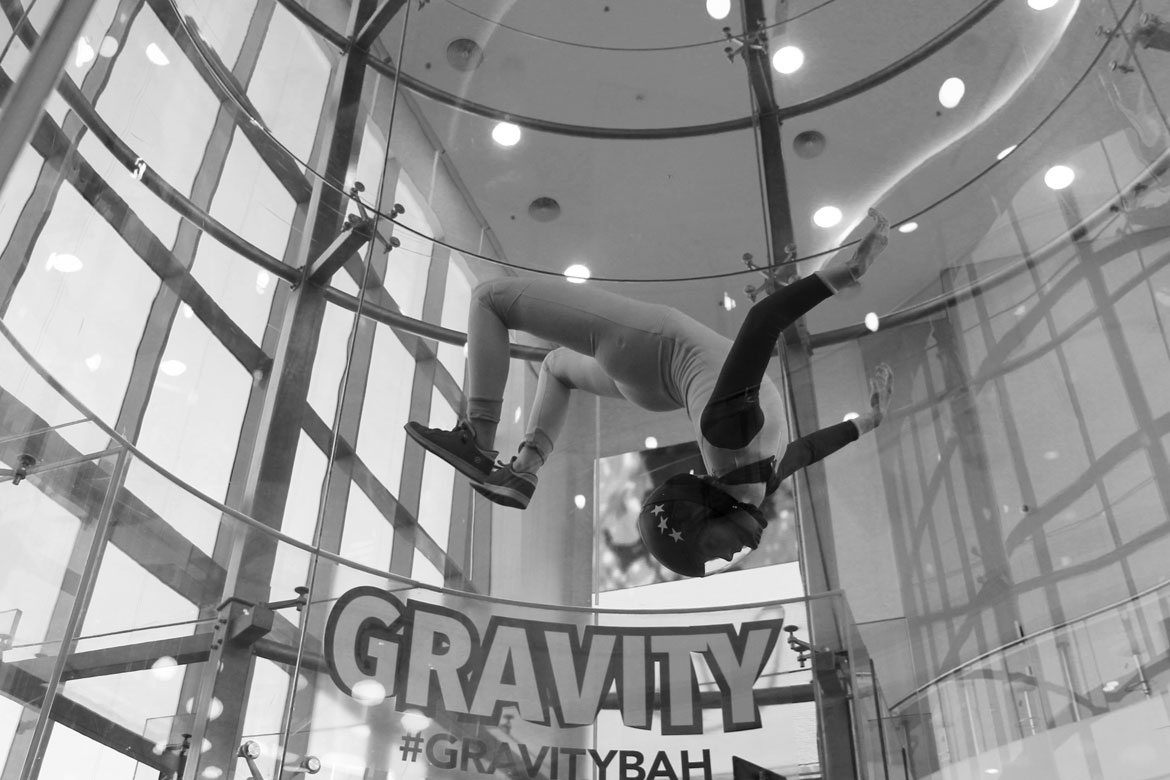Flying in the wind tunnel is not just a sport but also an art of dancing on air. Athletes goes through rigorous training to one day be able to showcase their incredible speed and artistry of impressive movement control inside an indoor skydiving wind tunnel. Daisy Bradshaw shares some insights on the human bodyflight competitions.
BY: Daisy Bradshaw (Indoor Skydiving Instructor, IFLY)
The first ever vertical wind tunnel on record was built by NASA in 1940 for aerodynamic research and in 1964 Jack Tiffany became the first recorded human ever to fly.
Skydiving simulators have certainly advanced since then, rapidly gaining popularity with over 200 wind tunnels worldwide and countless flyers from 3 to 100 years old. Flying routines have gone viral over the internet with proflyers showing off their most complicated tricks and graceful performances.
Human body flight competitions are split into four different disciplines: Formation Skydiving, Vertical Formation Skydiving, Dynamic Flying and Freestyle Flying.
Freestyle flying is rapidly gaining recognition as a performing art which is why, as a flyer myself, I’d like to offer some insight on this style of flying.
In a competition there are different rounds: Compulsory round and Free round lasting 45 seconds and 1 minute respectively.
In a Compulsory round, the competitor has to perform various moves which are given a score out of 10. There are six compulsory moves: 360º Barrel Roll Stall, Head Up 360º Breaker, Tucked Double Back Loops, Flip Twist sequence, Manna’s Space Lab and Thomas Flair into Head down Split (You can find tutorials for all these moves on YouTube).
Points are then deducted in the case of incorrect execution and believe me, these moves aren’t easy. Each flyer will spend countless hours practicing these tricks as the judges are looking for perfection in each round.
Free rounds are my personal favourite. Each flyer has one minute to perform a routine with or without music to show the judges what they can do in the airflow.
These ‘shows’ amaze me more and more as each competition goes by – flyers are constantly coming up with new ideas and technically difficult moves to wow both the judges and audience. Flyers are practicing for countless hours and are pushing their bodies past limits you’d never think were possible.
When it comes to scoring these routines, judges don’t hold back. First of all, the routine is scored a certain amount of points for difficulty: use of axis (using both Head Up and Head Down orientation), technically difficult moves, use of the whole chamber, etc. Participants are then judged during their live performance at the competition. Again, points are then deducted if their execution is sloppy, uncontrolled, imprecise, wobbly, not in frame or has missing elements to it.
Presentation also plays a huge factor to the overall scoring of a routine. The composition, flow, originality and visual excitement can make a huge difference to your ranking.
Of course, flying doesn’t have to be a competitive sport, it can also be a wonderful pastime for old and young at almost any fitness level. Everyone should experience the thrill of body flight at least once in their life. Thanks to aerodynamic research we can now fly without wings!
HUMAN BODY FLIGHT COMPETITIONS

Formation Skydiving
Formation Skydiving (FS) is a traditional discipline where flyers maintain a belly-down orientation and build formations with accompanying teammates. FS is a common starting ground for new competitors because it does not require advanced freefall skill and provides measureable progress.

Dynamic
Dynamic is unlike any other discipline in that it did not originate from a traditional Skydiving discipline. Created by a group of experienced flyers looking for the structure of Formation Skydiving but the creativity of Freestyle, Dynamic competition offers both Speed rounds and Free routines. Dynamic teams are composed of 2 (D2W) or 4 (D4W) people, each person given a specific slot in line where they work to follow one another as they fly the designated sequences.

Vertical Formation Skydiving
Vertical Formation Skydiving (VFS) takes Formation Skydiving and flips it vertically so flyers remain either head-up or head-down relative to the net. Similar to FS, VFS competitions split into different events based upon the number of team members participating, with separate categories based on skill.

Artistic Freefly and Freestyle
Freefly is an Artistic event, where two flyers perform creative routines, going for style rather than speed. The number of Rounds can vary, and each Round is judged live, where the judges use specific criteria to award scores.
Freestyle is the only solo discipline currently held at IBA competitions. Flyers perform both Free and Compulsory routines 60 seconds in length.
Creativity and difficulty are awarded in these disciplines as flyers work to amaze and impress the crowd and the judges.

